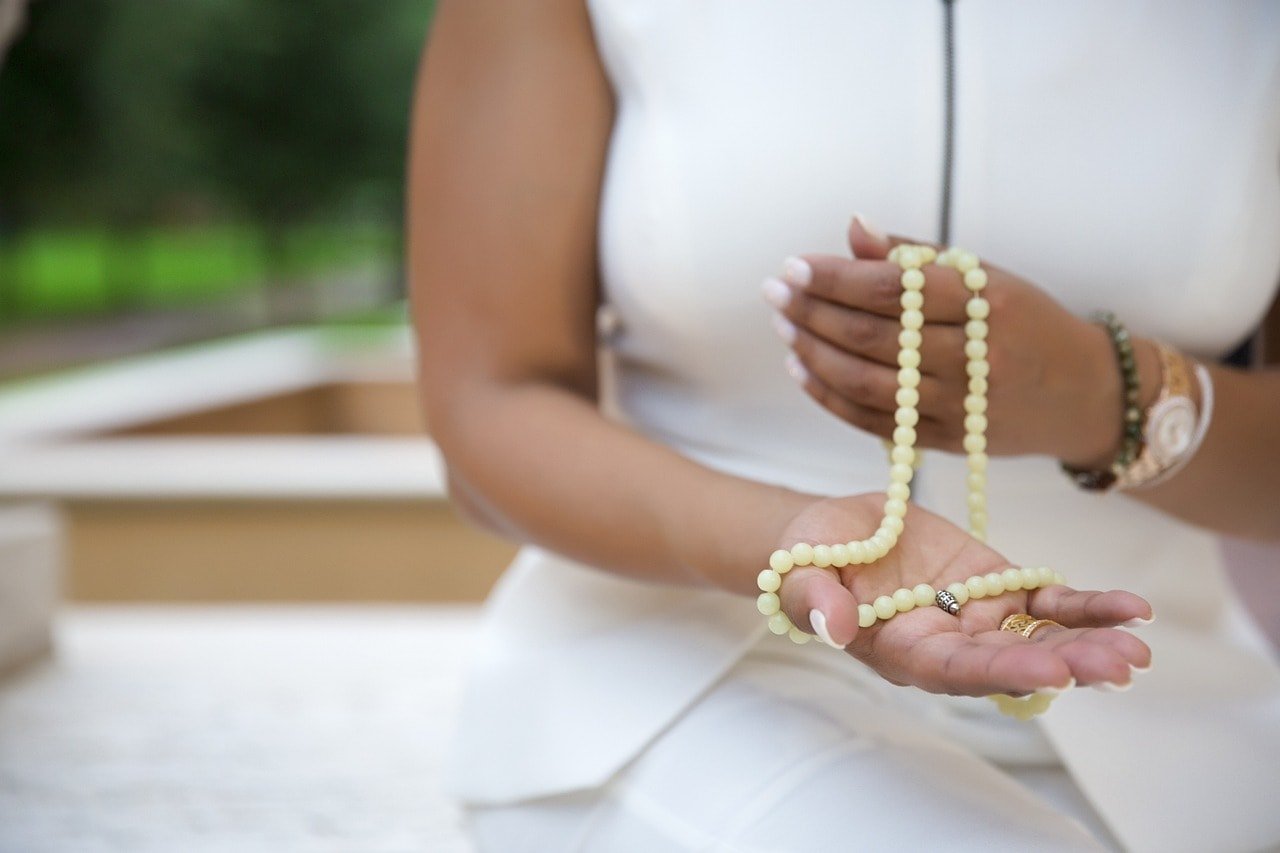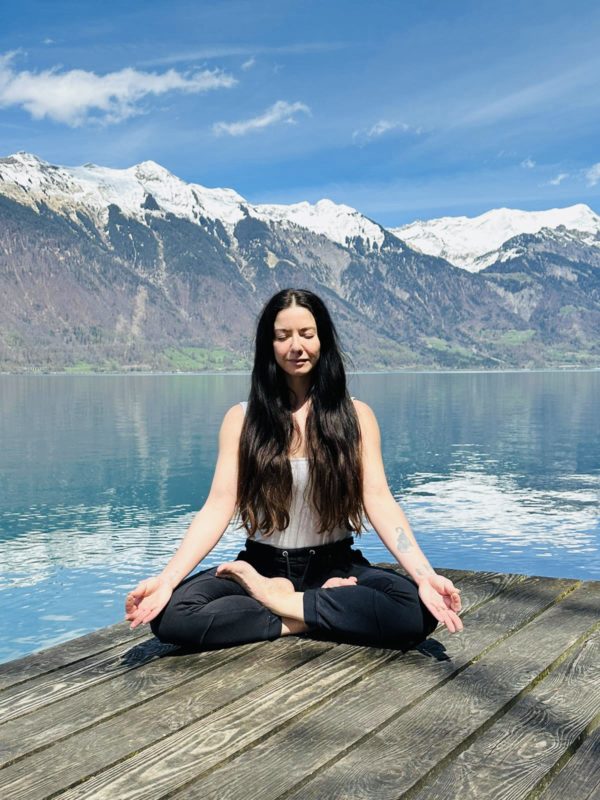Create unique yoga classes with these 7 tips.
Don’t just be another yoga teacher. Create classes your students really appreciate and want to come back to.
1. Opening & Closing Your Yoga Classes
The beginning of your yoga class is very important and many yoga teachers go straight into asanas or pranayama with just a ‘Welcome to today’s class. Let’s get started’ vibe. Many of your students might have rushed to your class after a hectic day, and will carry that mindset and tension into the class. The first couple of minutes of a class should be about bringing them to a calm, focused and mindful place, and encouraging them to carry this on throughout. You can make this more unique by starting your classes by saying a particular mantra or affirmation, or getting them to say it with you. You could also consider an intention, poem or prayer (I advise something secular that will suit everyone).
The same ideas can be applied for the closing of your classes. You want your students to take on the inner strength and mindfulness that they’ve cultivated during the class, into the rest of their day. You can consider using a particular mudra, quote, mantra, movement or action, to make the opening and/or closing of your classes more unique.
2. Expand On Your Yoga Class Theme
A lot of yoga teachers introduce a theme at the beginning of a class i.e. compassion, peace, mindfulness, feeling grounded etc, however they forget to refer back to it during the class, or even at the end. If your theme is love or compassion for instance, you can remind them of it during heart opening poses. A student of mine, on my last yoga teacher training course, had compassion as her theme in her practical exam. She cut out some hearts, coloured them in and placed them at the top of everyone’s mats as a reminder, a drishti point, and as a gift to take with them afterwards.
You could make a peace sign or just place a nice sticker on the mat to remind students to be focused and mindful every time they see it. If your class is based around the root chakra or feeling grounded for instance, make a point of including poses where you can emphasize rooting down through the feet, hands or sitting bones. Consider ways you can make your yoga class theme more unique and helpful to your students.
3. A More Unique Yoga Class Set Up
Many studios have a bare room with mats laid out and that’s it. I will always lay out a cushion, a small towel and a lavender eye pillow by each mat, whether in a studio or for private one-to-one clients. I spray the mats with some citrus oil diluted in water, and will often light a candle. You can have a little puja alter, lower the lighting, or wave a nice smelling incense stick around the room before they come in. Creating a more unique atmosphere in the room will help your students become conditioned to getting their body and mind into yoga class mode, each time they walk in.
And instead of cramming mats next to each other to get as many people in, I always leave more space between them with the cushion, towel etc to the side. This way they don’t get so distracted by others close to them, and they have their own little space to move and breathe in mindfully. It does mean that I make less money per class, but my classes became the most popular in the area and a lot of students left other studios to attend my classes instead. So consider ways you can enhance the experience for your students and create a more unique yoga class set up.
4. Create Some Unique Yoga Moves
Much of the physical yoga we know today, has borrowed movements and poses from dance, martial arts and other sports such as wrestling. There’s no rule that says you have to put asanas in a fixed order or teach them in a particular way. As long as your class plan is safe and makes sense ie. teaching gentler back bends before stronger ones, then you can be flexible and creative in your classes. You can make up your own signature moves or sequence of asanas, bring other non-yoga movements into the class, or create some funky transitions in and out of poses. For students that have been attending yoga classes for years, going to a class with some different and creative elements to it, can be a breath of fresh air.
5. Make The Yoga Classes Personal
This is more difficult if you have a lot of people in your classes, or you work at a gym for instance, where it’s not the same students always attending. However creating class plans that actually address the health and objectives of the students in the class, is going to be greatly appreciated. You can send each new student that signs up a questionnaire to find out about their health history and their objectives for doing Yoga. You can then create sequences tailored to those in the room, letting them know the benefits and reasoning of the poses, as you’re going along. It makes them feel like you genuinely care about making the class relevant to them.
And don’t just do generic warming up exercises at the beginning of every class. Ask the students where they’re feeling tensions that day and tailor the stretches accordingly. Even in set sequence classes you should be aware of modifications and variations for asanas that some students might need, and be flexible with the poses offered. Many yoga teachers forget that we’re here to teach the class our students need, not what we feel like, or want, to teach. Make each yoga class unique by including asanas and warming up that will benefits your student’s minds and bodies that day.
6. Yoga Is NOT Just Asanas or Instagram
Sadly in the West, and partly thanks to social media, the real objectives and benefits of yoga have become diluted. As a yoga teacher, especially if I’m the one that trained you, you know that Yoga is not about looking good in a bikini, just for flexible people, or the ability to hold a handstand. But however much you may want to bring deeper aspects of Yoga into your classes, you have to work with the objectives the students have come to your classes with, and not bombard them with information on elightenment, chakras, prana etc, that might put them off your classes.
So you could consider using the Living Yoga 108 philosophy cards to bring a bit more depth and integrity to the practice of Yoga. The different colored cards have quotes from the Vedas, Upanishads, Bhagavad Gita, Sutras and well known spiritual master, and have interpretations or contemplations on the other side, to make the quotes more relatable. You can read one out at the beginning of the class for them to have as an anchor to keep contemplating during the class, and something to come back to when they get distracted. I often use them for Savasana, and pick 5 quotes to read with 2 minutes in between, for students to think about while relaxing. It’s incredible how much this ancient wisdom is still so relevant today, and bringing some yoga philosophy into your classes, will surely make them stand out from the many generic, and purely physical classes, out there.
7. Be Your Unique Self
A lot of yoga teachers copy the language, structure, or type of class, that they learnt on their yoga teacher training course. Some don’t vary in their class sequences, or they feel they should be serious and somber during the class. Yoga is after all a discipline in meditation. But if you’re naturally an extrovert, who enjoys telling jokes, dancing and being a bit silly, then bring that personality to your classes. In the same respect if you are naturally a more calm and quiet introvert, then don’t feel the need to bring an energetic vibe to your classes, that doesn’t feel natural to you.
By being true to yourself and not feeling like you’re having to put on a facade when you’re teaching, you’ll make your classes nicer for you, and more authentic for your students. People will either enjoy your energy or not and that’s fine because you can’t win them all. But at least the classes you give will be uniquely you. So don’t feel you need to suppress, or enhance your character, to fit an idea of what a yoga teacher should be like. You don’t need to look or be any particular way, or change your name to something Indian sounding, to be a great yoga teacher. Just be yourself and that honest energy will be felt and appreciated, by your students.
Namaste
Charlie xx
If you’ve found any of the above helpful, or have any other ideas on how to make your classes more unique, please leave me a comment below.






